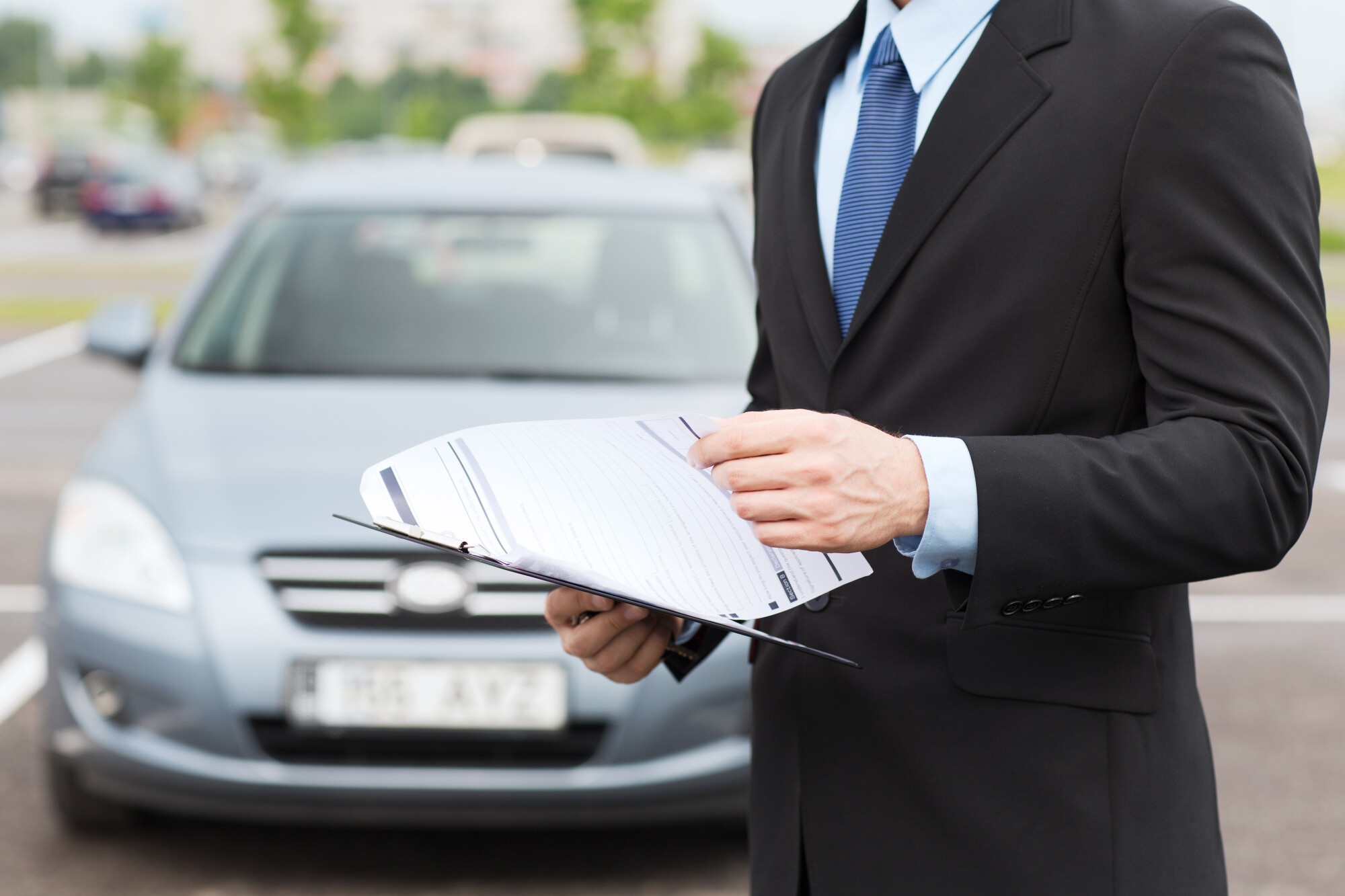Nearly 35.9 million used vehicles were sold in the United States in 2023, with a similar number projected for the 2024 fiscal year. Google searches for "sell my car to a dealer" are at an all-time high, and it's up to you to take advantage of the burgeoning seller market. Selling a car to a dealership can be confusing, so we're here to provide a comprehensive guide about all aspects of the dealer sales process.
The Process of Selling a Car to a Dealership
This section outlines the ins and outs of selling a car to a dealership. If you’re a dealer looking to buy cars from private sellers or build B2B connections, you can join our free Dealer Portal at this link!
Car Selling Research
Research is your best friend before you initiate a car dealership sale. Dealers pay more for well-running vehicles in prime condition. The more you prepare your car and map out the best dealerships for selling your car, the more money you'll likely make.
Assess Your Car's Value
You can refer to multiple online tools and guides to help find your car's value. These car-selling guides include:
These tools will give you the estimated value of a car based on the make, model, year, mileage, and overall condition. When you have a good idea of your car’s value, you’ll have more leverage in negotiations with an auto dealership.
Gather Your Vehicle Documents
You need your vehicle title, vehicle registration, and proof of insurance before you sell a car to a dealership. The required paperwork is essential to close a deal with any reputable car dealer.
If you still owe money on your car, bring a statement from your auto lender showing the payoff amount. Also, gather maintenance records and receipts to prove your car has been well-maintained.
Clean Your Car For Sale
Selling a car to a dealership is about more than just first impressions. You must thoroughly clean your car to squeeze the most money for a used vehicle.
Here are the steps for cleaning a car for sale to a car dealer:
- Wash your car, either by hand or with a professional car washer.
- Wipe and vacuum the interior of your vehicle.
- Remove all personal items from the interior of the car and the truck.
- Complete all glaring car maintenance issues, such as burnt-out headlights.
- Fix any scratches or dings, if possible.
The fewer issues your car has before a sale to a dealer, the more value you’ll be able to extract from it.
Choose the Right Car Dealership
Get quotes from multiple car dealerships before settling on a place to sell your car. Selecting the right dealership involves checking Yelp and BBB ratings, looking for word-of-mouth testimonials, and evaluating their customer service tactics from afar.
Some dealerships provide instant cash offers for used cars. This can save you time and effort, but it will likely cost you more money than negotiating a price with a car dealership.
Time is on your side! You don't have to jump on a dealership's first used car offer or cave to any pressure. Choosing the right auto dealership is your right as a private car seller, and you should exercise that right to your advantage.
Visit the Dealership and Get an Appraisal
Once you pick a dealership to sell your car, call or email them to schedule an appointment for your car's appraisal. It will allow the dealer to inspect your vehicle and assess its value.
Be prepared to leave your car at the dealership for a few hours during the appraisal process. Once the dealership knows what it's working with, the actual negotiation process begins.
Negotiate the Best Deal for Your Used Car
Here are some things to remember when negotiating the best price for a used car:
- The value you assessed for your car is almost always greater than the return a dealership offers. Do not cave on the first offer a dealership makes.
- You should expect the car dealership to be honest with you during negotiations. In turn, be honest about your car's condition and highlight any positive features, such as low mileage or recent maintenance.
- Your dealer will only buy your used car if it has a chance of making a profit. Be flexible in used car negotiations, setting a ceiling and floor that make sense to the dealership and your expectations.
- If you need the money immediately, you can secure an instant cash offer from a dealer. Just remember that you'll receive significantly less in cash than in a traditional used car negotiation.
- Walk away from any negotiation that seems too pushy or unfair. You don’t have to take any deal you’re not satisfied with.
- Car dealers compete for inventory. They seek out private car sellers to stock their inventories and increase profits. Feel free to go from dealership to dealership and use your leverage.
What to Expect During Your Dealership Visit
When visiting a dealership to sell your car, you must block off a few hours for inspections, test drives, and negotiations. We're here to walk you through the dealership visit process step by step.
Vehicle Inspection
When you visit the dealership to sell your car, it will be thoroughly inspected. Car dealers are meticulous during the inspection process to determine the car's value and condition, and rightfully so.
The dealer will first inspect your car's exterior and interior for damage, such as dents, scratches, or rust.
Car dealers will also look for signs of wear and tear inside the car, like stains or tears in the upholstery. Ensure your vehicle is clean and well-presented, which can impact the dealer's first offer.
Next, the dealer will check the car's mechanical parts. They will examine the engine, transmission, suspension, brakes, and other systems to ensure that everything is working correctly.
The dealer may also use diagnostic tools to check for hidden issues. Be prepared to answer questions about your car's maintenance history and any repairs you've made.
Remember, the car dealer wants to make as much profit as possible on your vehicle. When determining your car's value and condition, a dealer may highlight minor scratches, rust, and other issues to gain leverage in a future negotiation.
Test Drive
A test drive is a vital part of a dealer's used car assessment. You can only learn so much about a car when walking around it. Taking a vehicle on a test drive is the best way for a dealership to know your car's condition, performance, and actual value.
During the test drive, the dealer will pay close attention to how your car accelerates, brakes, and steers. They will also listen for any unusual noises or vibrations. If your vehicle has any issues, the dealer may notice them during the test drive and adjust their offer accordingly.
Honesty is always the best policy in any used car negotiation. Dealers are trained to spot issues during a test drive and will question you about any problems they may encounter. If you did not factor these issues in your previous value assessment, you may need to adjust your asking price accordingly.
Cars make more money when they're in good condition. Check all your boxes and get your vehicle in good shape before a dealer takes it for a test drive.
Receive an Offer
After the inspection and test drive, your dealer will make an offer for your used car unless they are not interested.
The dealership's offer will depend on several factors, including:
- Your car's make, model, and year.
- The mileage on the odometer.
- The car's overall condition, including any damage or mechanical issues
- The current market value for similar vehicles.
- The demand for your car's make and model.
Be honest when evaluating a dealership's first offer. The dealer is looking to make the biggest profit when reselling a car. It's up to you to stand firm and negotiate for a fair deal.
Evaluate Your Used Car Offer
The best way to evaluate the fairness of a car dealer’s offer is to compare it to your previous research. If the dealer lowballs you, be prepared to negotiate.
Use the information from your research as evidence as to why your car is worth more than their offer.
A dealership's first offer is unlikely to be the best one you'll receive. Even if a car dealer pressures you immediately, they are often willing to negotiate. You may not get the exact value for a used car that you're looking for, but you might come to a fair compromise.
Finalizing the Agreement
A good used car sales negotiation leads to a fair agreement for both sides. Once you've reached an accord to sell your car to an auto dealership, it's time to get the paperwork and payment terms out of the way.
Trade-in vs. Cash Payment
When selling your car to a dealership, you have two common payment options: a trade-in toward the purchase of another vehicle or a traditional cash payment.
A trade-in is an intelligent option If you plan to buy a new car from the same dealership. You're likely to get a higher return for your vehicle with a trade-in, and the value of your old car will be applied to the new vehicle's purchase price, reducing the amount you need to pay.
If you don't want to buy a new car from the dealership, the cash payment option is your way forward. Your car dealer will buy your car from you with a cash payment or check.
Pay Taxes and Fees
Taxes and fees for a used car sale to a dealer depend on your state and the specific sales agreement.
You may still need to pay sales tax on the difference between the trade-in value and the new car's price. There will also likely be fees for processing a cash payment and transferring the title.
Before finalizing a sales agreement, speak with your car dealership about applicable taxes and fees. An extra negotiation push may lighten the blow.
Complete Your Paperwork
When you sell your car to a reputable car dealership, you must complete the necessary paperwork to transfer ownership officially. You'll also need to provide the car dealership with several important documents. These typically include:
- Vehicle Title: The vehicle must legally be in your name to transfer ownership to the dealership legally.
- Vehicle Registration: Your used car must be appropriately registered under your name.
- Proof of insurance: Most states and dealer bylaws require you to provide proof of an active car insurance policy.
- Payoff statement (if applicable): If you still owe money on your car, bring a statement from your lender that shows the current loan payoff amount.
Save time by gathering these documents before visiting the dealership.
Sign Over Your Vehicle Title
You must be able to locate the title or be listed as the official owner to finalize a sale with a reputable car dealer, and you must sign your vehicle title to the dealership to officially transfer ownership rights.
From there, the dealership will handle any necessary vehicle registration and title transfer tasks with the appropriate government agency.
Receive Your Payment
You should receive payment for your car as soon as all necessary paperwork is finalized.
The dealership will pay you for your used car with one of the following payment options:
- Check: A dealership will cut you a certified check for deposit.
- Cash: Some dealerships will offer you cash in hand for a used car, especially for those of lesser value.
- Direct Deposit: Some dealers may provide a direct deposit service that transfers funds directly to your bank account.
- Trade-in Credit: If you trade in your car, the value will be applied to purchasing another vehicle at the dealership.
Wrapping Up Your Used Car Sale
Once you officially sell your used car to a dealer, you must take care of a few last things.
Remove Personal Items and License Plates
Double-check that you've removed all personal items from the vehicle before handing your car over to the dealership. This includes any items in the glove box, trunk, or storage compartments. In some states, you may also need to remove your license plates, as they are tied to the vehicle owner rather than the car itself.
Notifying Your Insurance Company
Remember to notify your insurance company about the sale of your car. You'll need to cancel or update your insurance policy to reflect the change in ownership. If you're buying a new car, ensure you have proper auto insurance coverage before driving it off the lot.
Keep Records of the Sale
Be sure to file away official copies of your car's sale, including the title transfer, bill of sale, inspection report, and other key documents. You can refer to these documents in case of dispute or for tax purposes.
Selling a Car to an Online Dealer
Selling a car to an online dealer has become increasingly popular and will only keep trending in that direction. According to Consumer Affairs, 9.7% of car sales went online in 2020. The website projects that number to go up to 18% by 2025. Now is the best time to jump ahead of the curve and consider online dealerships for your used car sale. Here is a step-by-step look at the online car sales process:
Online Valuation
The first step in selling your car to an online dealer is to get an online valuation. You'll need to provide information about your vehicle, such as its make, model, year, mileage, and condition. The online dealer will then use this information to generate an instant cash offer for your car.
Inspection and Test Drive
Once you've received an initial offer, the online dealer will typically arrange an inspection and test drive to verify the car's condition. This may involve sending a representative to your home or scheduling a time for you to bring the vehicle to a designated location.
Offer Adjustment
After the inspection, the online dealer may adjust their initial offer based on any discrepancies found. You can proceed with the sale if you agree to the adjusted offer.
Paperwork and Payment
Selling your car to an online dealer involves paperwork similar to that of a physical dealership, such as transferring the title and providing proof of registration. The online dealer will typically guide you through the process and may even offer to handle some of the paperwork on your behalf.
Once the paperwork is complete, the online dealer will arrange payment, which could be a check, direct deposit, or wire transfer.
Vehicle Pick-Up
The final step in selling your car to an online dealer is arranging for the car to be picked up. Most online dealers offer complimentary pick-up services, such as sending a representative to your location to collect the car and complete the sale.
If you need to ship a car at any time during this process, be it to the dealer or a point for pick-up, check our instant car shipping calculator for a free instant quote!
Sell Your Car Confidently and Smartly!
It pays to be well-informed when selling your car to a dealership. Car dealers are obviously in the business of making money. If you're unaware of how much your used car is worth or how to negotiate for its proper value, you'll receive a much smaller return than you previously hoped.
Sell your car to a dealer with knowledge and preparation on your side. Don’t jump on the first deal and keep a few steps ahead to get the right price at the right time.
Nexus Auto Transport is proud to help educate customers like you on how the car industry works. We're an A+-rated, BBB-accredited car transport company coordinating vehicle shipping for thousands of customers in the United States annually. Check out our guide on how car shipping works for information on how to ship your car safely and cost-effectively.
You can get a free car shipping quote at any time from our vehicle transport cost calculator, or call us at (224) 218-2949 for more information. It is our distinct pleasure to serve you.



